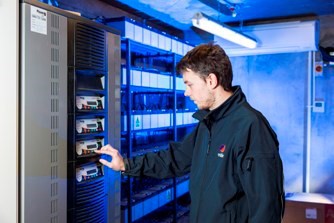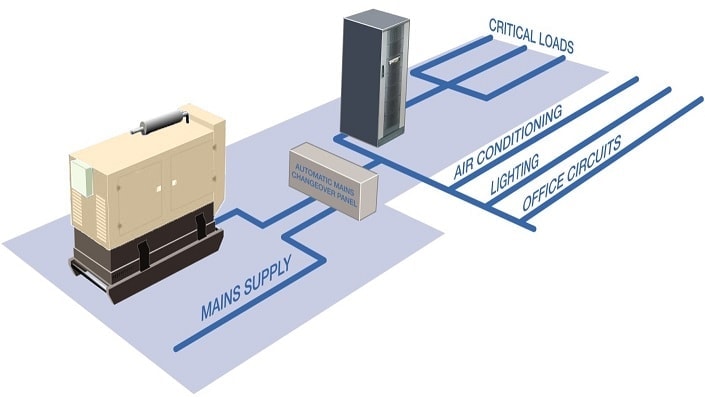Buyers of uninterruptible power supplies (UPSs) naturally take great care in checking their proposed purchase’s specifications and fitness for supporting their critical load. Parameters such as availability, energy efficiency, capacity and costs are essential and must be correct. However, some practical steps are also essential to ensure a successful installation and operation of the UPS.
In this article Tan Yu Ming, General Manager at KOHLER Uninterruptible Power, takes a look at these steps – from selecting a suitable installation location to arranging ongoing maintenance.
If your new data centre installation or upgrade calls for an uninterruptible power supply (UPS), then you will no doubt take great care in comparing any prospective UPS’s specifications and capabilities to the demands of the new data processing environment. Questions are: does the UPS offer the highest possible availability while being energy-efficient? Does it provide sufficient protection against all likely power anomalies, is it correctly sized for your installation and can it grow with your enterprise, while offering the best value for money?
While these questions are perfectly valid and must be answered satisfactorily, there’s also a set of practical considerations essential to any UPS installation’s ultimate success. Adequate provision must be made for tasks ranging from identifying a suitable location to performing mechanical and electrical installation, as well as negotiating an on-going maintenance contract with the UPS supplier. Below are some ideas to consider when planning the practical aspects of a UPS installation.
Choosing the location
Choosing a suitable location is essential, although this has become easier as UPS systems have become smaller and lighter. The floor must support the UPS’s load, while the batteries must also be safely accommodated. Allowing sufficient space for any possible future expansion, as well as providing easy access for service and maintenance technicians is key. Conversely, unauthorised access must be prevented.
The UPS and its local environment will mutually impact one another. The UPS must be adequately cooled and protected from excessive dust and humidity, while its effect on existing airflow and load on existing air conditioning equipment must be catered for. The installation site should avoid noise and heat issues for the user enterprise and its staff. In general, UPSs up to around 20kVA can usually run in office environments, while larger sizes require a special-purpose, segregated area.
Consideration is also needed for cable routing and entry, especially for medium to large UPSs. On solid floors, a cable trench or UPS plinth will be necessary to allow power cabling and termination under the UPS and battery. Specialised computer rooms typically have raised floors to accommodate data processing and communications equipment cabling and possibly cooling. However, these floors cannot usually bear the weight of UPS and battery equipment, which must instead be mounted on a steel plinth standing on the base floor. Adjustable plinth height allows accurate aligning of the UPS equipment with the suspended floor.
Installation and commissioning
Electrical installation of UPSs is a specialised task requiring qualified, experienced electrical staff, ideally from the UPS supplier or a recommended contractor. In either case, staff credentials should be checked and references taken from previous sites. The installation must always comply strictly with the supplier’s instructions as well as local and national installation regulations. Although these may vary, correct earthing is always essential for personnel safety and equipment protection. Larger, higher-powered UPSs also require careful consideration of the switchgear and cabling design.
Considerable time and cost can be saved, by allowing for future business growth and addition of extra UPS modules. Modern, parallel free-standing UPS installation can be considerably eased by using an integrated switchgear and bus bar solution.
Once installed, the supplier’s trained and experienced staff should commission the UPS equipment. Commissioning covers a complete check of system facilities and options, establishing warranty cover, registering serial numbers, ensuring supplier acceptance of environmental conditions and providing UPS operations training for the user.
Happily ever after
UPS planning should include a service agreement with the supplier. This should cover emergency callout facilities with defined response times as failures are possible even in the best-maintained, most reliable equipment. A planned maintenance and testing regime is equally as important, which should include scheduled inspection and filter-changing on the UPS, together with regular battery checks. Battery impedance testing allows accurate prediction of life expectancy, while load bank testing reveals the battery capacity at time of test. In any case, batteries should be viewed as consumable items that will periodically need replacement and legal disposal.
This article has shown some of the practical considerations that complement a UPS’s technical specifications and fitness for purpose. Planning must be made for its entire operational life, from establishing a suitable location, through mechanical and electrical installation to commissioning and on-going maintenance.




